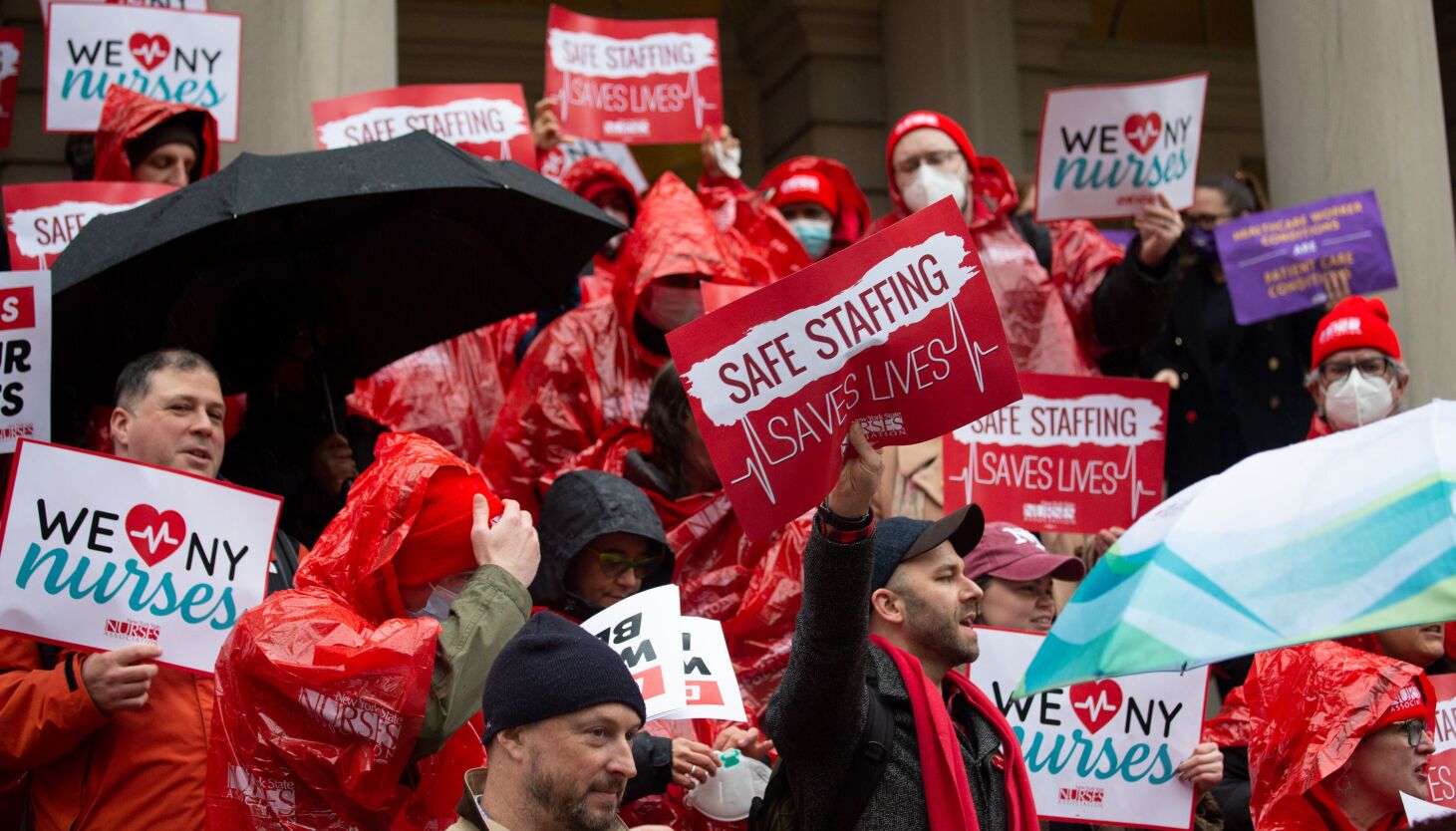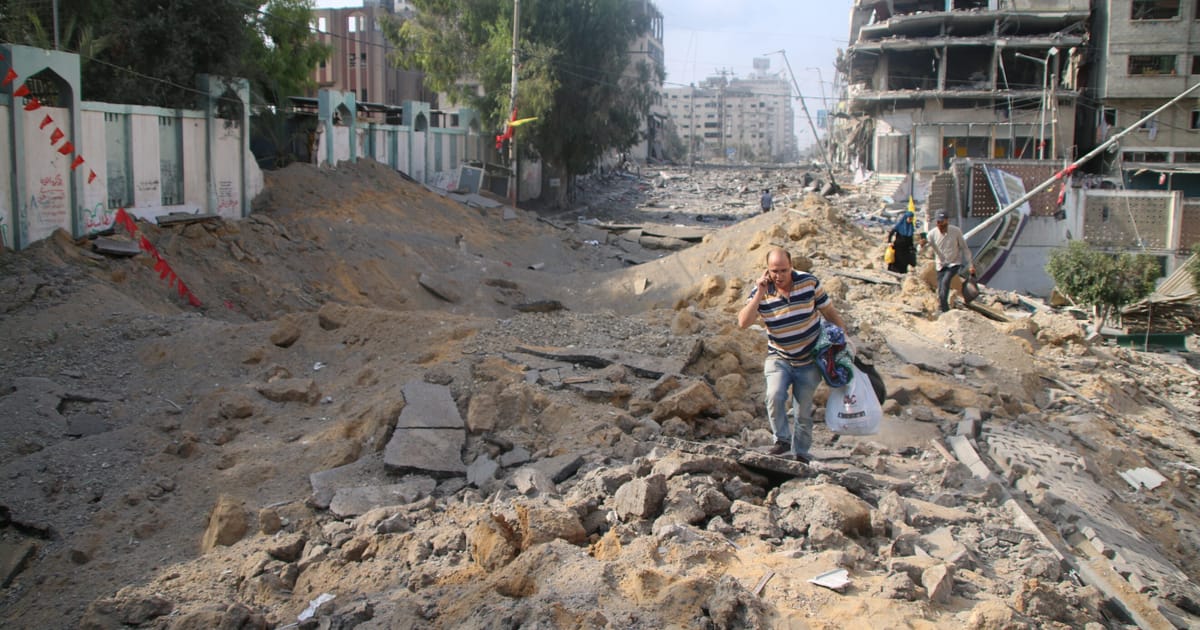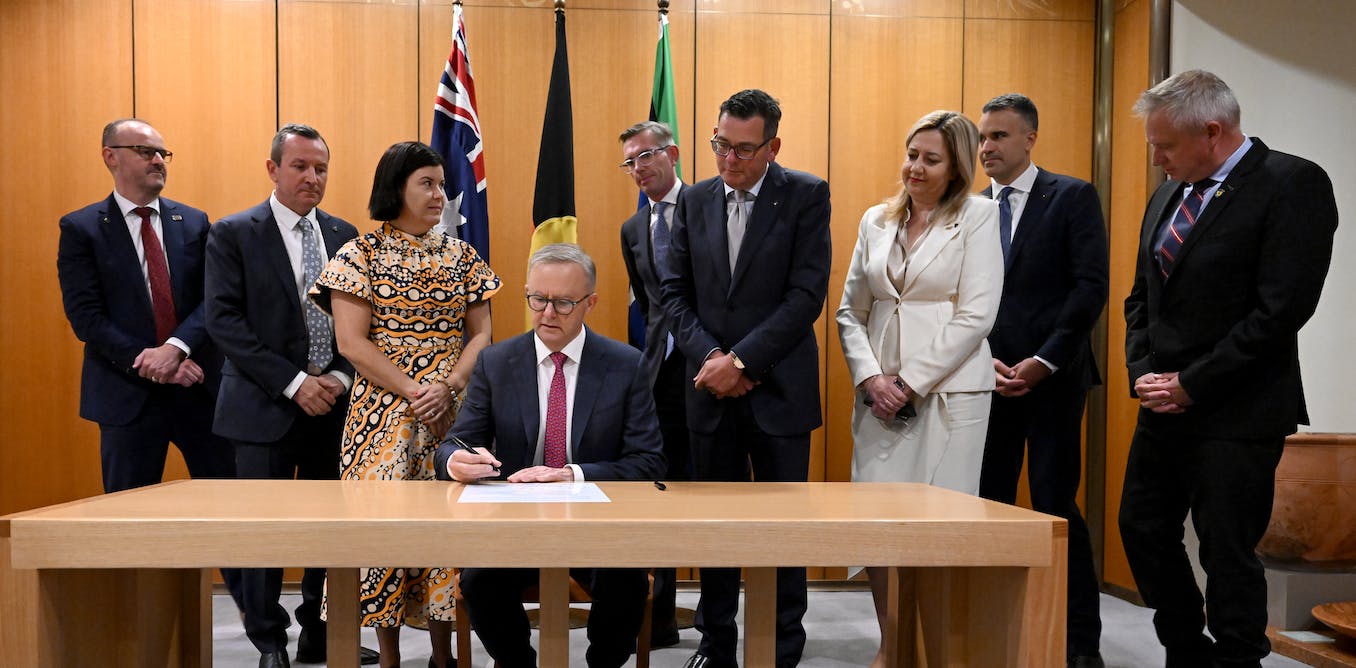At Montefiore Medical Center in The Bronx, the psychiatric unit is “usually at capacity,” according to a resident doctor. At Interfaith Medical Center in northeast Brooklyn, where the electronic medical records system has been offline for more than two weeks, the psychiatric unit is “almost full” of patients on a daily basis, according to a nurse.
That was before Mayor Eric Adams last week announced measures to make it easier for emergency responders to bring people with serious mental illness to the hospital involuntarily.
Psychiatric nurses and medical residents who spoke with THE CITY say the number of nurses and other workers needed simply are not present in emergency rooms already struggling with staffing in the COVID era.
“I don’t think that [Adams] has the lens that he needs to see what is currently occurring in these units, and how we every day struggle to help individuals with mental health needs, how our ER’s are so overburdened with emotionally disturbed persons, or those that are brought in for anxiety, depression, suicidality,” said Irving Campbell, a psychiatric nurse practitioner at NewYork-Presbyterian Brooklyn Methodist Hospital in Park Slope.
“We see that every single day. And every day is a struggle to figure out where we’re going to put these patients,” Campbell said in an interview last week.
Adams’ surprise announcement put a spotlight on staffing shortages as expiring union contracts at some major local hospitals have nurses clamoring for better pay and working conditions. Nurses at the Montefiore, Mount Sinai and NewYork-Presbyterian hospital systems are either in the midst of negotiating, or gearing up to negotiate, new collective bargaining agreements. The contract covering residents and interns at the city’s 11 public hospitals system expired last year.
Many hospital staff nurses are leaving the profession or going into more lucrative positions as private practice nurses or travel nurses, trends intensified by the stress of treating COVID.
When hospital units are not sufficiently staffed with nurses, that means other staff, including doctors, have to take on additional work including doing intake assessments, changing sheets, bedpans, inserting IVs and transporting patients.
It’s a situation that is uniquely challenging in New York because of the sheer number of patients, said Dr. Ashley Brittain, a regional representative for the Committee of Interns and Residents-SEIU, the union representing medical residents and interns.
A former national representative for the union, Brittain said the staffing problems in New York stick out even among other regions, even as the state has made broad efforts to remedy nurse staffing shortages.
“There’s an overabundance of residents. It seems to be a nursing aide and nurse shortage,” she said.
Sorry, We’re Full
James Plastiras, a spokesperson for the state Office of Mental Health, told THE CITY that as of September, about 415 of a total 2,640 psychiatric beds in the city were not available — about 16%. More than a thousand psychiatric beds statewide shifted to COVID care at the height of the pandemic and are gradually coming back, Gotham Gazette recently reported.
Beds can go offline for a variety of reasons aside from staffing shortages, including construction, said Plastiras.
“OMH is continuing to work with hospitals to re-open offline psychiatric beds, and expects more than 200 beds in New York City to come back online in the coming months,” he said in a statement.
Psychiatric nurses and residents who spoke with THE CITY expressed trepidation about handling the needs of more people with serious mental illness with their current staffing.
When a new patient comes who requires observation, it’s typically a nurse or nurse assistant who is taken off the floor to supervise them, taking critical staff off the floor and away from nursing duties, nurses and doctors said, with other staff picking up the slack and taking on more patients.
“We need more beds, and we need more allocations for staffing,” said Ari Boma, a mental health nurse at Interfaith Medical Center in Brooklyn. “We are almost full all the time.”
When psych departments and units overflow, an attending physician may request through EMS for a transfer to another hospital in the area. But diversions for psychiatric beds in The Bronx, where Brittain works, are routinely denied because they are at capacity in the entire borough.
EMS, she told THE CITY, “will say no, your request is not granted. And you’re like, ‘Well, why not?’ And they say: ‘Because every other hospital in the borough is also calling to request diversion.’”
The same is true at Bellevue Hospital in Manhattan, the facility with the largest inpatient psychiatric unit of any hospital in the city.
“So many times that I’ve worked there, we went on diversion because we just didn’t have enough nursing staff,” said Dr. Michael Zingman, a psychiatry resident at Bellevue Hospital.
Double Loads
Last Wednesday, nearly two dozen nurses from specialties ranging from emergency medicine to cardiology testified about the staffing shortage at the city’s public and private hospitals before an oversight committee hearing held by the City Councilmember Mercedes Narcisse (D-Brooklyn), chairperson of the hospitals committee.
Nurses and union leaders said that chronic understaffing has driven professionals to a breaking point.
The staffing shortages are also happening after nurses statewide saw a tripling in workplace injuries and illness between 2019 and 2020, according to the federal Bureau of Labor Statistics — a figure mostly driven by exposure to COVID-19 and long, punishing shifts during case surges.
“The main problem in New York is not that we don’t have enough nurses to meet demand — there are thousands of nurses in New York who just don’t want to take hospital jobs,” testified Nancy Hagans, a registered nurse at Maimonides Medical Center and the elected president of the New York State Nurses Association.
Hagans also noted that many nurses who leave hospitals go on to become travel nurses, independent contractors who bounce from hospital to hospital for months at a time and can earn two to three times as much as staff nurses.
“The most immediate problem is chronic understaffing. Hospitals try to save a few dollars on payroll by ignoring our contractual staffing ratios,” she added. “When there aren’t enough nurses and their patient assignments are too heavy, the patients suffer and the nurses get worn down and start looking for new jobs.”
While intensive care units generally have staffing ratios that cap the number of patients nurses can tend to per shift, the same is not true for other hospital departments — especially emergency departments — where patients cannot be turned away.
Testifying to Council last week, Flushing Hospital nurse Craig Burke said that nurses in the emergency department “should be assigned at most six patients. There are times when nurses are charged with caring for more than 15. This is unacceptable.”




